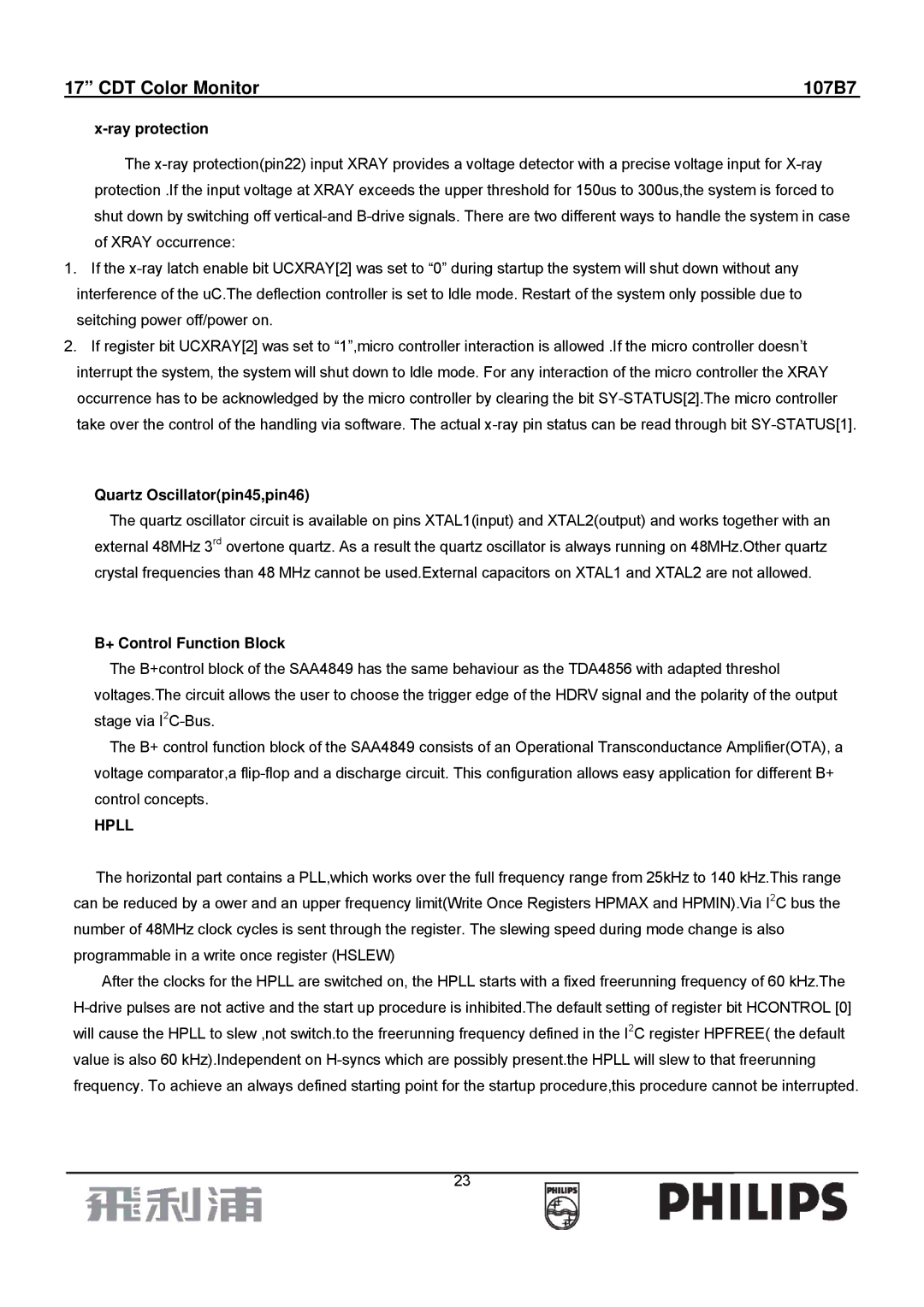107B7 specifications
The Philips 107B7 is a well-regarded monitor designed for users who prioritize both performance and health in their computing experience. Aimed at professionals and home users alike, this monitor integrates advanced technologies that enhance productivity while promoting eye comfort.One of the standout features of the Philips 107B7 is its commitment to Eye Care technology. This monitor incorporates a range of innovations specifically designed to reduce eye strain, such as LowBlue Mode and Flicker-free technology. LowBlue Mode reduces the amount of harmful blue light emitted by the screen, which is known to cause discomfort during prolonged use. Flicker-free technology, on the other hand, eliminates flickering at all brightness levels, providing a stable image that helps prevent fatigue.
The monitor boasts a 21.5-inch display with a resolution of 1920 x 1080 pixels, delivering sharp and vibrant visuals. This Full HD resolution ensures that users can enjoy crisp images whether they’re working on spreadsheets, watching videos, or designing graphics. Additionally, the panel features wide viewing angles, which means that colors remain consistent even when viewed from off-angles, making it ideal for collaborative work.
In terms of connectivity, the Philips 107B7 offers a variety of options. Users can easily connect their devices via HDMI, DisplayPort, and VGA inputs. The inclusion of USB ports is also a significant advantage, allowing for easy connection of peripherals like keyboards, mice, and other accessories.
Another notable aspect of the Philips 107B7 is its ergonomic design. The monitor features a height-adjustable stand that enables users to customize the screen's position for optimal viewing comfort. This flexibility aids in maintaining good posture and reducing strain during long working hours.
With its sleek design and adaptive technologies, the Philips 107B7 is more than just a monitor; it is a tool for enhancing productivity while keeping health and comfort at the forefront. Whether for office use, creative tasks, or leisurely activities, this monitor is designed to meet a variety of needs in today’s dynamic workspace. By combining advanced features with user-friendly design, the Philips 107B7 stands out as a strong choice for anyone looking to upgrade their viewing experience.

